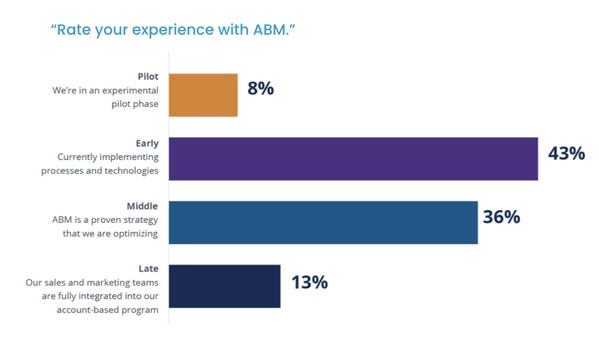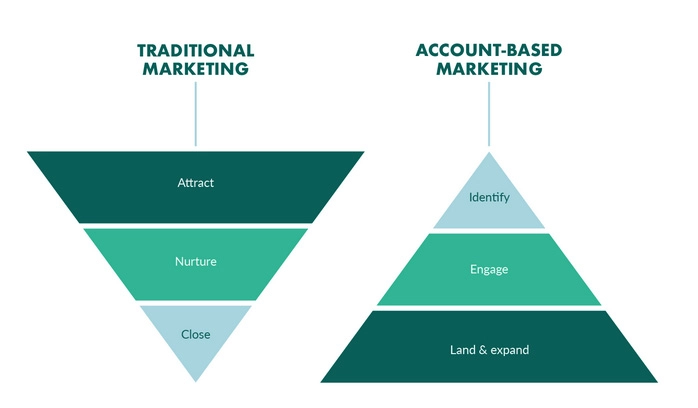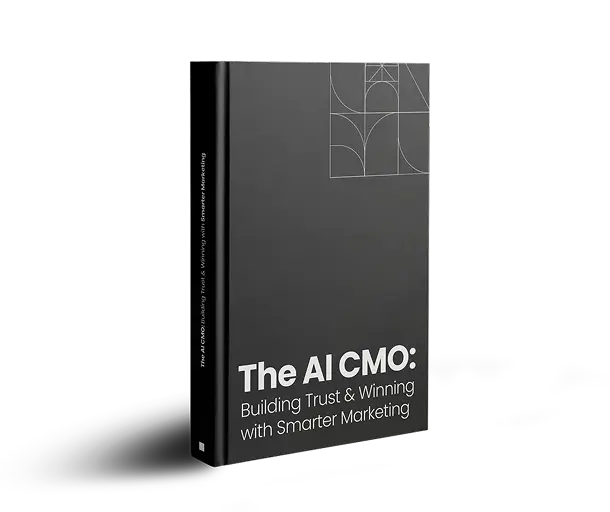
Introduction
According to a survey in 2020, over 90% of B2B marketers had an active Account-Based Marketing (ABM) program in the early, middle, or late stage.

Source: Terminus
Those are compelling numbers.
It is evident that ABM has a lot of potential to help you get more leads and conversions. However, working on the strategy for the sake of it won’t yield any returns. Instead, you have to be strategic about your approach to get more conversions.
In this post, we’ll discuss how you can leverage ABM to get more conversions. But before we get into the details, let’s start with the fundamentals.
How Is Account-Based Marketing Different From Traditional Marketing?
Account-based marketing or ABM refers to taking a targeted approach to B2B marketing.
In ABM, sales and marketing teams work together to identify prospects or accounts that are likely to turn into paying customers.
The idea behind ABM is to focus only on high-value accounts that are likely to give you the best ROI for the efforts you put in. Once you have identified high-value accounts, you can employ strategies to engage with them, close deals, and to nurture your relationship with them.
In a nutshell, account-based marketing flips the traditional marketing funnel upside down.

Source: Superoffice
One of the biggest benefits of the ABM strategy is that you can boost your B2B conversion rate. It can give you high ROI, provided you make some calculated moves.
That’s where a lot of B2B marketers stumble.
How to Boost Your ABM Conversion Rate: 5 Common Mistakes That You May Be Making
If you have been trying your hand at ABM without seeing fruitful results, it’s possible that you may be making some rookie mistakes.
In this section, let’s discuss some common ABM mistakes that may be coming in the way of you making any real progress.
Mistake #1: Not Preparing the Profile of an Ideal Target Customer
Identifying the right accounts is at the core of Account-Based Marketing. Before you start the identification process, you need to be clear on the criteria that are important for you. That will help you narrow down your focus.
If you are looking for an account without having a criteria list, you’re making a big mistake. This can be a hindrance in your strategy to boost your ABM conversion rate.
What’s the way out?
Get a pen and paper and write down what your ideal target customer looks like. Some of the questions that might help you refine the criteria include:
- Which industry do they belong to?
- How many employees do they have?
- What is their company revenue?
- Which key decision makers in the company are you looking for?
- Which product or service do you want to sell to them?
- What are their main pain points?
Answering these questions will help you understand the kind of organization that you want to do business with. Once you are clear on the criteria, you can check out LinkedIn to get more information about companies that you may be interested in.
Mistake #2: Not Creating Relevant Content
After you’ve identified the right prospects, the next step is to engage them. For this, sending random content might not help you get the conversion rate that you are looking for.
ABM is all about finding the right accounts and then tailoring your narrative according to their needs and pain points.
If you’re sending random, mass-produced content, it’s time to change your strategy. Instead, focus on your chosen accounts’ pain points and create content that addresses these issues.
You can also create content that is targeted towards a specific industry or even certain decision makers in an organization.
Another approach you can take is to create content based on the customer journey. This way, you can create content that moves B2B buyers from one funnel stage to the next one.
This ABM strategy can go a long way to increase your traffic, nurture your leads, and boost your conversion rate.
Mistake #3: Working In a Silo
If your sales and marketing teams are working in silos, don’t expect to see a good conversion rate from your ABM strategy.
This approach is all about consolidating efforts to get the best results. Getting your sales and marketing aligned is absolutely necessary to succeed with ABM.
That brings us to the question — How do you get these teams on the same page?
To get started, you should share the wealth of data you have about your existing customers with both the teams. You should encourage them to check out look-alike accounts that may have similar revenue, size, and may be based in the same sector.
In addition to this, they should have access to insights like customer behavior, sales performance, competitor research, and more.
It’s critical for teams to integrate insights—including sales performance, customer behaviors, and competitive and market research
When sales and marketing team up, it can help them get a more comprehensive view of the customer journey and take into consideration all the key metrics involved.
Mistake #4: Expecting Overnight Results
ABM isn’t a magic strategy that will shoot up your conversion rate in a week or two. B2B buyers invest a lot of time in product research. Since impulse purchases aren’t common, the entire buying journey is longer than you would typically see in the B2C funnel.
That’s one of the reasons why it is unrealistic to expect overnight results via ABM. Even if you are successful in identifying the right prospects and engaging with them, closing the deal can take time.
So, it’s important to set the right expectations before you begin.
ABM is a long-term strategy that will require consistent effort and time. In fact, you need to publish personalized across different channels and target them in such a way that you reach the right audience.
ABM may even get you fewer leads than you would get via traditional marketing. But the main difference is that the leads you get via ABM will be qualified leads. If you nurture them over a period of time, there is a higher chance of improving your conversion rate.
So, be patient, and be prepared to step into ABM for the long haul.
Mistake #5 Not Testing Enough
Are you working on your ABM strategy and expecting it to work in the first go? You’re headed for some disappointment. Like most marketing strategies, ABM is all about trial and error. It’s about learning on-the-go.
You can’t start working on your ABM campaign and then stop tracking or testing it altogether. That is a recipe for disaster. Instead, it is wiser to implement your strategy and see how your target audience is responding to it.
Let’s say, you published a social media ad about your latest product with eye-catching visuals. You may have expected it to get a huge click-through rate. But if the response that you get is cold in comparison to your expectations, it’s time to pivot your strategy.
Testing is the backbone of polishing your ABM strategy and boosting your conversion rate. Every test that you conduct will give an insight into what resonates with your target audience. It also makes it easy for you to gauge the effectiveness of your ABM campaign.
Analyzing the responses that you get is the best way to improve your strategy and optimize your campaigns. Keep in mind that the more time and effort you invest in testing, the better are your chances of boosting your conversion rate.
Conclusion
The foundation of an effective account-based marketing campaign is in understanding your target audience.
While it can help you get more leads and boost your conversion rate, all your efforts can fall flat if you are not strategic about your efforts. If you are making any of the mistakes mentioned in this post, it’s time for you to fix them.
Do you have any questions about boosting your conversion rate with ABM? Please feel free to mention them in the comments section.
Our blog
Latest blog posts
Tool and strategies modern teams need to help their companies grow.

Video has emerged as one of the most effective tools to cut through the noise and con...

The way B2B buyers research, engage, and decide has changed and so must the way marke...

Channel marketing helps B2B companies grow by partnering with third-party sellers. It...






